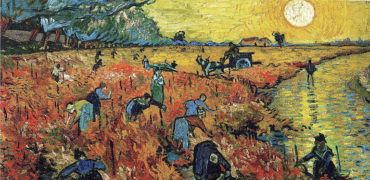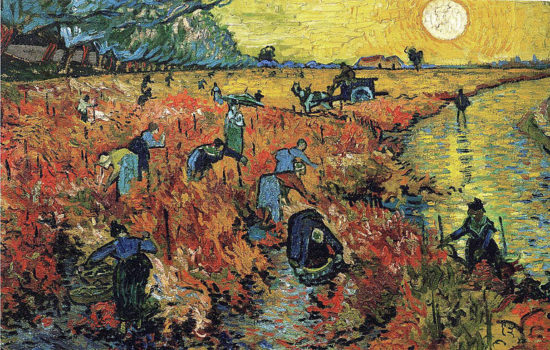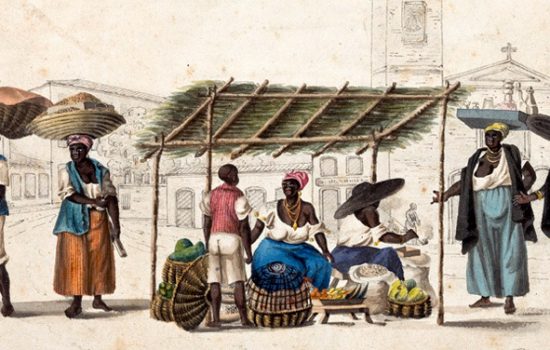The theme of the indication of origin and provenance of a food product is particularly touching all over the place. There is no legal system that has not introduced or tried to introduce strict rules in place than those developed for decades and largely anchored to the dogma of customs origin only.
It is now evident that the globalization of the WTO (World Trade Organization) and EU harmonisation impose a reformulation of the interests involved. Those of the producers, of other economic operators and those of consumers. New legal balances, struggling to find an equilibrium, be it due to objective difficulties (during recessive times its harder to reach agreement) or to the heterogeneity of the lobbying goals on the field (legitimate, of course).
In recent months, however, a new chapter in the saga for the origin of food, seems to have reached to an end. The political weakness of the European Commission as well as the difficult implementation of parts of the Regulation No 1169/2011allow unexpected room for national legislators to manoeuvre. Concerning the Italian market, in the last few months a reform of the rules on origin and provenance is being discussed which, if passed, will haveserious impact on the communication in foods and beverages and also in courtrooms.
A flag matter: Italian legislation, between high-flown statements and General legislation inefficciency in comparison to European law
The Italian legislation aimed at protecting the “Made in” has been enriched over time with specific legislative add-ons for the food industry. Worth remembering art. 4, paragraphs 49 and 49-bis of law No. 350/2003 (Budget Law 2004) and law No. 4/2011 (provisions on labelling and food quality).
On the one hand the law 350/2003, art. 4, paragraph 49, prohibits the import, export for marketing purposes, or any kind of commercialization of products bearing false or misleading indications of origin or provenance. It establishes criminal repression and, secondarily, provisions of administrative nature. We should remind briefly that, according to this Law, is false any designation bearingthe stamp “made in Italy” on products or goods non-originating from Italy under EU law on origin (with a certain approximation: the place of last substantial transformation). It is instead fallacious the use of signs, figures, or anything else that could lead consumers to believe that the product or good are of Italian origin included false or misleading use of corporate brands under the deceptive commercial practices discipline “except as provided by paragraph 49-bis, even if the foreign origin /source of products or goods is expressed “.
The quoted paragraph 49-bis specifies the concept of false indication, meaning “the use of a trade mark by the proprietor or licensee in a manner that leads consumers to believe that the product or the goods are of Italian origin under EU law on the origin, without furtherprecise and obvious directionsabout the origin or provenance from abroad, or otherwise sufficient to avoid any misunderstanding by the actual consumer about the actual source of the product. Further, in case it lacks the statement, by the owner or licensee of the trade mark, containing the information that, from his care, should be expressed during the marketing phase on the actual foreign origin of the product. ” The above paragraph also includes a special provision for food: “ by “actual origin” is understood the place of cultivation or breeding of agricultural raw materials used in manufacturing and producing the goods, and the place where they underwent substantial transformation. The offender shall be punished with an administrative fine of between 10000 euro 250,000 euros.”
Since its first publication this provision was deemed inapplicable for contradictingEuropean law relating to food (food law) and because of procedural defects in the notification process, never made in Brussels (a matterwe continue analizing below).
The provisions of 2003 are coupled with the subsequent February 3, 2011, law No 4 (Provisions on Labellingand quality of foodstuff), which among other things has an article (article 4) entitled “Food labelling”. That article states that “in order to provide consumers with a complete and accurate information on the characteristics of foodstuffs marketed, processed, partially processed or unprocessed, and in order to strengthen the prevention and the repression of food fraud, it is mandatory (…) to exhibit in the labels of such products apart from indications stated on art. 3 Legislative Decree 27th Jan 1992, number 109 and its modifications, the indication of place of origin or provenante and accordino to regulation EU, of incorporation of ingredients in which there is presence of GMO’s at any phase of the alimentary chain, from the initial production location to the one of final consumption”. For processed food products, goes on the Law from 2011, “designation relates to the place where the last substantial transformation takes place or to the cultivation or breeding place of the prevailing agricultural raw materials used in the preparation or production of goods“. This law has also included in the text of Legislative Decree No. 109/1992, paragraph 5-bis, within the article 8, that “In the cases of a mandatory indication in compliance with this article, it is also mandatory to indicate the origin of the characteristic highlighted ingredient“.
It is clear that art. 4 of law No. 4/2011 stands in stark deviance, in several respects, in relation to Community rules.
Even the treatment of sanctions was reformulated by adding to the hypothesis of offence the residual application of an administrative fine of between 1600 euro to 9500 euros for “anyone who offers for sale or otherwise markets food products not labelled in accordance with the provisions of this article and of the implementing decrees” .
The implementing decrees, in fact. Although article 4 of law No. 4/2011 stated the adoption of inter ministerial decrees of the Minister of Agricultural food and forestry policies and of the Minister for economic development, concerning “the ways of acting mandatory indication” established by law, have never been implemented.
From a legal point of view, the provisions of art. 4, Law No. 4/2011 could not be applied or their violation would be arguable because they lack the implementing decrees, as notifying Brussels of those provisions was never done, and for other reasons contrary to Community law. Old story, full of cunning and vulgar ineffectiveness, however, suits the political interests of most active coporative interests, in need of some little flag to wave.
Yet in recent years numerouscomplaints have flourished, even of criminal law, by zealous officers of the Ministry of agricultural, food and forestry policies, relating to the use of “national flags” or indications such as “Italian”, “product produced in Italy” on foods and beverages originating in (within the meaning of the Community Customs Code) Italy but guilty of the infamous practice of using source ingredients from outside Italy.
Many of these procedures are still ongoing but it is clear that Courts cannot but acknowledge that the provisions of law No. 350/2003 and law No. 4/2011 are not applicable for being contrary to Community law and because of not being notified in accordance with the procedures laid down at European level, as well as the legal precedent.
As for identifying the contrast of those regulations with the EU law, the European Commission has opened an investigation of such national provisions. As regards the second argument, notification, is a principle now, even by rules of Italian jurisdictional courts and our Italian Supreme Court of Cassation, that the failure to notify a law of this kind involves non-enforceability of those provisions not notified.
The picture we get is in line with the worst national tradition: legislation is passed, it is hard to read as a whole and thus avoids deeper control, acknowledgingthat once in courtrooms, whererule of law still has a citizenship, those new rules will be blunt arrows. Just to recall the emblematic case, of the complaint made against a trader who had placed the words “Made in Italy” on packaging of fruit salad and prunes in syrup on the assumption that “part of the fruit (though not higher than 30%) used for fruit salad was brought from abroad. The Supreme Court, while confirming theacquittal supported that “in the present case it is evident that it was neitherfruit marketed as harvested, nor of goods entirely and exclusivelyproduced or collected in a particular country, or from their derivatives. It was instead products towards which had contributed two or more countries, or final products that had undergone a processor transformation in a country other than that of the collection, so the applicable criterion was that indicated by art. 24, unless, of course, in this case remained all conditions and assumptions pointed out, and in the first place the actual presence of a “substantial” processing or transformation. ( Cass. pen. Section III, n. 27250/2007).
If the wind vane spins: the new regulation on the provision of information, the Commission’s weakness and compromise in progress
The previously mentioned national provisions have to deal with the new regulatory framework derived from Regulation No 1169/2011, applicable from December 13, 2014. For this subject matter that regulation is relevant in two respects: the provision for definitions not mentioned before, and the establishment of a framework of substantial and procedural rules, to be followed by the national legislature, in order to legitimately rule on those aspects.
As it is known, the European regulation confirms the traditional view rule for which the indication of the country of origin, or place of provenance of a food, should be provided whenever their absence might mislead consumers regarding the actual country or place of origin of those goods (article 26.2 (a) Reg. No. 1169/2011). A rule that’s unsatisfactory for many and, of course, of controversial applicability.
For “place of origin” the regulation states that it refers to the one resulting from the application of the Community customs code. “Place of origin”, for purposes ofregulation, should be understood”any place signaled as that from which the food comes, but that is not the «country of origin» as identified in accordance with articles 23 to 26 of Regulation (EEC) No 2913/92; the name, company name or address of the food operator written on the label does not constitute an indication of the country of origin or place of provenance of the foodstuff under this Regulation” (article 2.1 (g) Reg. No. 1169/2011).
Focus is to be put on “in all cases, the indication of the country of origin or place of provenance should be provided in such a way as not to mislead the consumer, and on the basis of clearly defined criteria, so as to ensure equal conditions of competition for theindustry and to ensure that consumers understand better the information related to the country of origin and the place of origin of the food. Those criteria should not apply to indicators linked to the name or address of the food business operator “(see cons. 29 of Reg. No. 1169/2011).
Secondly, this regulation lays down (article 26.2 (b) Reg. No. 1169/2011) for certain categories of products (fresh, frozen and chilled meats) the indication of the country of origin or provenance requesting a Commission Regulation for application details (see Commission Regulation No 1337/2013).
Thirdly, article 26.3 of regulation, introduces the rule that “when the country of origin or place of provenance of a food is listed and is not the same as that of its main ingredient: a) is also referred to the country of origin or place of provenance of this main ingredient; or b) the country of origin or place of provenance of the main ingredient is listed as different from that of the food “.
However, the expression “primary ingredient” shall be understood as” the ingredient or ingredients of a food representing more than 50% of that food or that are usually associated to the denomination of that food by the consumer and for which in most cases requires quantitative particulars “. The application of art. 26.3 is however subject to the adoption of enforcement activities by the Commission which currently have not yet been published.
And it is precisely this last paragraph, i.e. the implementation by the Commission that is opening up new scenarios. Being politically too weak in this historical juncture, the Commission seems ready to openings in terms of national implementation, as requested by several Member States.
In the dialogue between the European Commission and Rome, regarding the evaluation procedure of the disciplines mentioned in the previous paragraph, an agreement seems to have been reached on amendming the art. 4, paragraph 49-bis, regarding the discipline of information on food products.
Provided these are perspectives “de iure condendo” and that so far no legislative amendment has been passed, it would seem there’s fear of introducing a ban on misleading indication on the country of origin or place of provenance or the origin of the primary ingredient. In the aim of the Government, it would become a case of unfair information conforming to what’s stated on art. 7 , Regulation n. 1169/2011. The administrative fine provided for the violation would reach up to 250,000 euros.
This provision, if confirmed and endorsed by the European Commission, would lead to a taxonomy by legislation of an unfair practice relevant to art. 7, Regulation No 1169/2011. As noted in that article, in point (a), prohibits that information on food that does not mislead, especially “regarding the characteristics of the foodstuff and, in particular, the nature, identity, properties, composition, quantity, durability, country of origin or place of provenance, method of manufacture or production.”
The prohibited practice would be that of misleading consumers on the origin of a certain food item or about the source of its primary ingredient. A kind of national enforcement of art. 26 (3) of Reg. (EC) no 1169/2011.
In that regard, some obstacles appear. The new specificity would be acted only in case of “use of a brand “or perhaps also by means of other information? How to behave in those, certainly not isolated cases, in which determining the primary ingredient is not easy to do? Who is the “consumer” the new prohibition refers to? An average consumer? Any consumer? What relations are between the new (and possible) sanctionatory provision, and the sanctions established by the Legislative Decree 109/1992? Is it reasonable to sanction in a such diversified way the category of unfair information? Under art. 7 of Reg. EC No. 1169/2011 (the new sanctions should be a minimum of 10000 euros up to 250,000 euros, instead of sanctions by the Decree 109 between 1600to 9500 euros)?
In the hope that the final version discussed will banish these uncertainties. It’s worth noting that the proposals on the table are not of a nature able to introduce a positive obligation of disclosure of the origin of the raw material. In fact, one thing is to obblige indicating the origin of the primary ingredient (positive). Something else is to avoid the risk of error. The latter decisive nuance, when dealing with the conformity assessment of labels, in terms of their risk of deception. If such a new standard is to be passed,and applicable, it would become extremely imperative for communication in foods and beverages.














